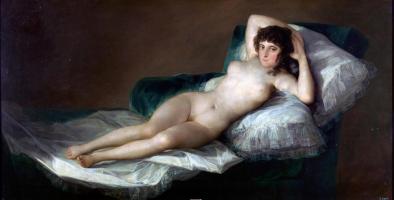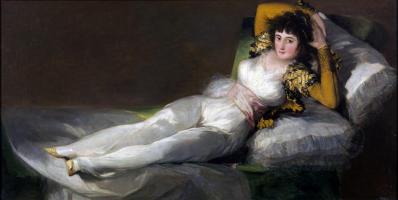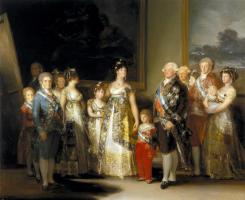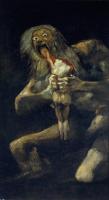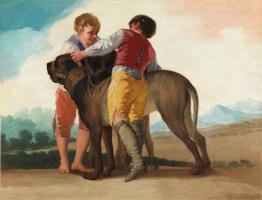Francisco Goya
The artistic career of the Spanish artist Goya was long and successful. He was principal painter to King Charles IV of Spain and director of the Spanish Royal Academy, and prodigiously gifted as a draughtsman, print-maker and painter. He was born in Saragossa, had a conventional apprenticeship in art, and became known principally as a painter of portraits and of the horrors of war.
His portraits are often devastatingly candid, and so caustic in their portrayal of the corruption and arrogance of the Spanish monarchy that it is surprising his commissions continued. He criticized violently the cruelty, hypocrisy and stupidity that surrounded him; and in a series of prints called The Disasters of War he revealed the savage brutality of Napoleon’s forces when they took over Spain in 1808. But he had another side which came to the fore in his sensual and subtle portraits of women, indicating the immense scope of his talent. He became the greatest Spanish painter between Velazquez and Picasso, and one of the greatest artists in Europe.
The Third of May is one of a pair of paintings which together depict two days in the short-lived uprising of the people of Madrid against the French troops in the Napoleonic Wars. The paintings were commissioned a few years after the event, with the command to the artist to ‘perpetuate with his brush the most notable and heroic actions or events of our glorious insurrection against the tyrant of Europe’; and Goya has produced two of the most electrifying and dramatic works in European art.
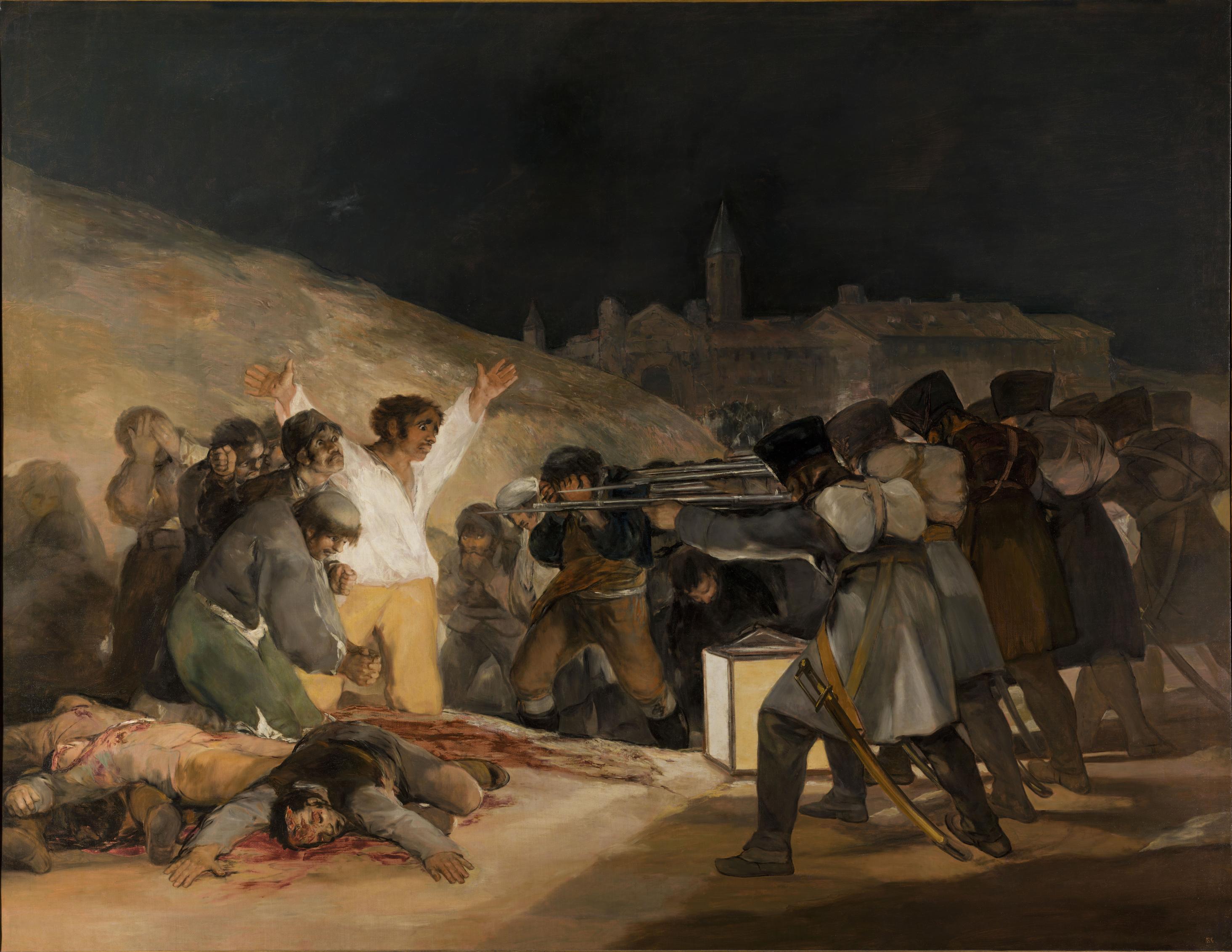 This painting depicts the second day, when Spanish civilians were executed by
the invading army in the aftermath of the fighting. The group of Spaniards
cowering in panic in front of a French firing squad are depicted with
horrifying realism: the dead body slumped on the ground, the pool of blood and
the expressions of the victims are all shown with a shocking intensity. They
are portrayed not as heroes of war, but as ordinary frightened men, pleading
for their lives and showing disbelief, terror and even a sort of crazed bravado
in the face of death.
This painting depicts the second day, when Spanish civilians were executed by
the invading army in the aftermath of the fighting. The group of Spaniards
cowering in panic in front of a French firing squad are depicted with
horrifying realism: the dead body slumped on the ground, the pool of blood and
the expressions of the victims are all shown with a shocking intensity. They
are portrayed not as heroes of war, but as ordinary frightened men, pleading
for their lives and showing disbelief, terror and even a sort of crazed bravado
in the face of death.
Our attention is focused on the central figure by means of various devices: Goya has painted him, and the figures surrounding him, considerably larger in proportion to their executioners than they would be in reality; the massacre is taking place at night by the harsh light of a lantern and the kneeling man’s white shirt reflects its glare; the soldiers are shooting at point-blank range; and the man’s pose, with arms outstretched, is extremely eye- catching and dramatic. These tactics of composition and lighting heighten the drama and fear, and reveal Goya at his most passionate.


